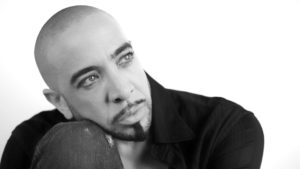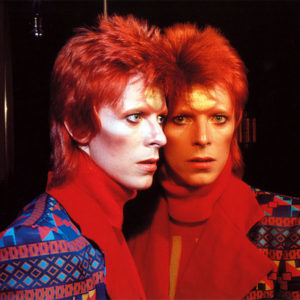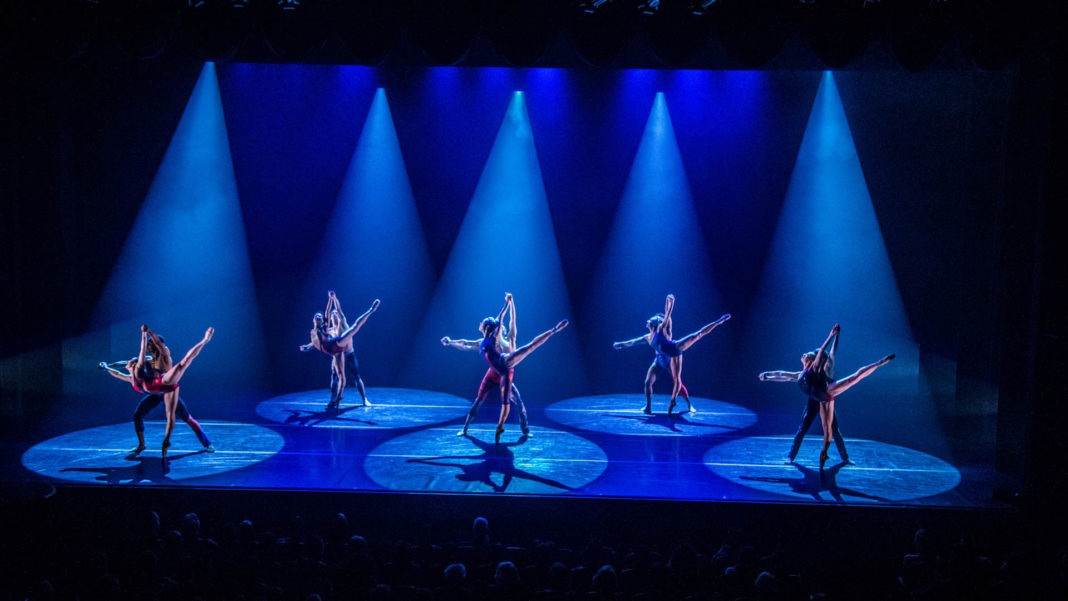In 1994 David Bowie reunited with Brian Eno and they were in the studio working on a project that would be released the next year as Outside. At the same time choreographer Dwight Rhoden and dancer Desmond Richardson formed a new dance company called Complexions Contemporary Ballet. This weekend those worlds collide as Complexions presents Stardust, a 43-minute “ballet tribute to David Bowie.” The performances begin on Friday at the Dorothy Chandler Pavilion and continue through Sunday. The program also includes Bach 25, a piece that had its world premiere just a couple days ago in Arcata, California.

I spoke with Rhoden about Bowie’s influence on him, the work he does with the company and about Richardson performing this weekend here in Los Angeles.
You told Newsweek Magazine that Bowie, for you, “was the visual before the vocal.” Given how meticulous Bowie was about his visuals, how do you go about making new visuals to accompany his music?
I think it’s more his personality, his personas and the energy of the music. I don’t really remember the videos so much. I remember certain live performances of him and how he moved about the stage, but more about the energy he would bring into the room he was in. How he encompassed the mood of the song or delivered the lyrics to the audiences was a big inspiration. He was very expressive and exposing. He was a very authentic artist and very truthful, at least that’s my interpretation.

The Joffrey Ballet had success with Billboards, which was set to the music of Prince. Complexions has a new work set to Annie Lennox’s version of “Summertime.” What is it about androgynous/sexual/chameleon-esque performers and their music that lends itself to dance?
I think that it just speaks to me because that was the time I was coming into my own. The androgyny of Bowie and certainly Lennox was attractive because it was all about being your authentic self and not being afraid to be different. I have always felt with someone like David Bowie, and this is my interpretation, he didn’t really care what people thought. For me this is really a love letter to Bowie and his music – to his work. I just was really attracted at all times to making it work.

Your company is made up of people who didn’t grow up with the same Bowie presence as you and Desmond have. How did you go about informing them about Bowie and his work?
Absolutely, but now they are huge fans. Most of them are too young. What I did was I kind of introduced them. Many had heard of him or heard “Let’s Dance” or “Fame.” But they didn’t really associate him with 40 years of making music and how he really jumped from genre to genre without any problem. They love to perform this piece because it’s very theatrical. You can be somebody else. For me, I always feel like there’s a little Bowie in all of us.

But is there one David Bowie? Is the Bowie of Ziggy Stardust the same Bowie of Absolute Beginners?
That’s a good question. I think they are all different parts of himself and I think he had many layers. I think he was a complex man. In the production there are about seven different figures who lead the songs. That was really fun to jump from piece to piece. This is just a one-act work at this point. It was tough to pair down the playlist.

Desmond Richardson is performing as part of these shows in Los Angeles. How often does he still perform since he stopped touring?
He’s alive and well and a phenomenal artist. He is performing in the other work, Bach 25, which is a brand new Bach work. He performs here and there. It depends on our schedule. He’s very busy running a company, but he is still in shape and a beautiful artist. He’s one of those guys who has taken amazing care of himself and he’s in tip-top shape.
In a 2011 interview you said that fusion was the future of dance. Since then multiculturalism has been and is being more and more embraced. Multiculturalism is one of the foundations of Complexions. Is fusion a by-product of multiculturalism? And vice-versa?
I think so. It’s also my outlook on the world and how I’d like to see it. We started, Desmond and I, with one idea: to bring these seemingly different qualities and put them under one roof and watch them complement and celebrate each other. Complexions did that from day one and we are still doing it. With the company, the cast, the subject matter we work in the music and the movement and all those things are sending a simple message that has to do with unity and the beauty of differences. It would be such a boring world if we were all the same.

Bowie once said “From my standpoint, being an artist, I want to see what the new construction is between artist and audience.” Do you share that sentiment and if so, how do you see Complexions moving forward with their audience in the next ten years?
I want the work to be relatable. I want the audiences to see themselves on stage or be inspired or moved by the energy or even the subject matter. It could be something that could be disturbing to an audience member, but they are touched. It’s important we touch them. It’s important the audience is involved in the work. They don’t have to like it, but I want them to be moved one way or the other. Complexions is not afraid to entertain you. Hopefully you walk out of the theatre with a little bit more of something. A discovery. Something that it touches in your heart or your soul. Then I feel like we’ve done what we should have done. As Alvin Ailey said, “dance came from the people and should be delivered back to the people.” I echo that sensibility.
Production Photos by Hagos Rush












